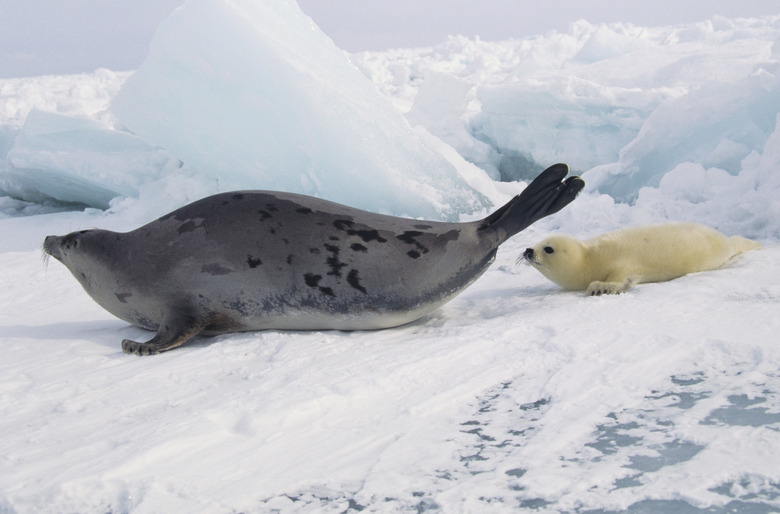What Foods Do Harp Seals Eat?
Harp seals are sleek swimmers that spend the majority of their lives propelling themselves through the icy waters of the Arctic and North Atlantic oceans. They come on land once per year to mate and give birth. Harp seals are carnivores and maintain a diet of fish and crustaceans. Their ability to remain submerged for up to 15 minutes, coupled with superb swimming skills, make them agile hunters in this vast, watery world.
Fish
Fish
Harp seals prey on as many as 67 species of fish, according the International Union of Conservation of Nature, or IUCN. Many adult harp seals maintain a diet of polar and arctic cod, capelin and herring fish. Some fishing industry lobby groups suggest that harp seals are to blame for dwindling supplies of cod. However, commercially-fished cod accounts for only 3 percent of a harp seal's diet. They also eat sculpin, Greenland halibut, redfish, plaice and predators of cod fish, such as squid.
Invertebrates
Invertebrates
A harp seal's diet may include 70 species of invertebrates — spineless animals — such as crabs, amphipods, krill and shrimp. According to the Norwegian Ministry of Fisheries and Coastal Affairs, harp seals eat more crustaceans during the summer and autumn feeding seasons, and switch to fish during the spring. The White Sea population of harp seals consumes approximately 3.5 million tons of both invertebrates and fish annually.
Milk Does a Body Good
Milk Does a Body Good
Baby harp seals feed on their mothers' milk for the first two weeks of their lives. The mother seal abandons her pup after two weeks, and the baby harp seal must fend for itself by learning to hunt on its own. Interestingly enough, if the seal pup does not eat, its teeth will not grow.
Cite This Article
MLA
Guzman, Alyssa. "What Foods Do Harp Seals Eat?" sciencing.com, https://www.sciencing.com/foods-do-harp-seals-eat-6747374/. 24 April 2017.
APA
Guzman, Alyssa. (2017, April 24). What Foods Do Harp Seals Eat?. sciencing.com. Retrieved from https://www.sciencing.com/foods-do-harp-seals-eat-6747374/
Chicago
Guzman, Alyssa. What Foods Do Harp Seals Eat? last modified March 24, 2022. https://www.sciencing.com/foods-do-harp-seals-eat-6747374/
